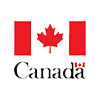System for Analysis of Wind Collocations (SAWC): A Novel Archive and Collocation Application for the Intercomparison of Winds from Multiple Observing Platforms Provide for Aeolus Evaluation
The need for accurate atmospheric wind observations is a high priority in the science community, including numerical weather prediction (NWP). To address this requirement and to facilitate the intercomparison of winds from multiple platforms in support of the evaluation of wind dataset characteristics, a collaboration began between the NOAA/NESDIS/Center for Satellite Applications and Research (STAR), the University of Maryland/Cooperative Institute for Satellite Earth System Studies (CISESS), and the University of Wisconsin-Madison/Cooperative Institute for Meteorological Satellite Studies (CIMSS) to establish the System for Analysis of Wind Collocations (SAWC). SAWC presents a centralized public archive of wind data from multiple sources, identified pairings between them collocated in space and time, and a collocation application developed for their intercomparison. The archive contains wind observations in NetCDF—a universally accepted format—and includes Aeolus Level-2B (L2B) lidar winds from the European Space Agency (ESA); atmospheric motion vectors (AMVs), aircraft winds, and rawinsonde winds processed by the NOAA/National Centers for Environmental Prediction (NCEP); and stratospheric balloon data from Loon, a former subsidiary of Google’s parent company Alphabet. Unique collocation techniques were developed to match the winds based on specified criteria and generate output files containing array indices of the wind matches as well as the collocation differences pertaining to each pair. Several tools accompany the collocation application to visualize and statistically analyze wind intercomparisons. The period of record spans the lifetime of Aeolus (September 2018 – Present Day) except that the record for Loon runs from 2011 to January 2021 when the Loon project ended.
The potential capability of SAWC is wide-ranging, from product validation and observation error characterization to advancements in data assimilation and the global Earth observing architecture. In this presentation, we demonstrate one potential use of the archive by conducting a long-term evaluation of Aeolus winds reprocessed using the baseline 11 (2B11) L2B processor version for the period of September 1, 2019 through August 31, 2020. Collocations are performed between Aeolus horizontal line-of-sight (HLOS) L2B winds, and AMVs, rawinsondes, aircraft, and Loon winds, all projected onto the Aeolus HLOS. Recommended quality controls (QC) are applied. The performance of Aeolus is assessed using the collocation application developed for use in conjunction with the archived winds. Comparison statistics are stratified by Aeolus observing mode (Rayleigh-clear derived from the molecular scattering signal and Mie- cloudy derived from particle scattering), geographic region, height, and other parameters.






